If I could only have 25 plants in my backyard, these are the ones I would choose. They are attractive and hardy, supply nectar and pollen throughout the growing season, attract birds, butterflies, and other pollinators, and provide food for butterfly and moth caterpillars. This information is primarily from my experience and the Shooting Star Nursery catalog. You can also download this list as a 2-page chart (500KB PDF), or a 5-page list with pictures (800KB PDF).
Spring |
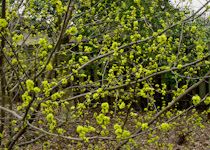 | Spicebush (Lindera benzoin)
Type: shrub
Flowers: March-April
Height: 5-9’
Light preference: sun, shade
Moisture: avg
Note: Host for Spicebush Swallowtail butterfly |
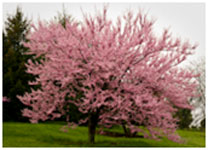 | Redbud (Cercis canadensis)
Type: tree
Flowers: April
Height: 12-25’
Light preference: sun, part shade
Moisture: avg
Note: Early source of nectar |
 | Wild Columbine (Aquilegia canadensis)
Type: perennial
Flowers: May-June
Height: 1-2’
Light preference: shade, sun
Moisture: avg
Note: Attracts hummingbirds |
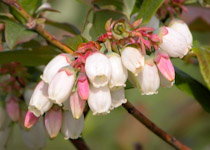 | Blueberries (Vaccinium species)
Type: shrub
Flowers: May
Height: 3-4’
Light preference: sun, part shade
Moisture: avg
Note: Birds feed on berries; colorful fall foliage |
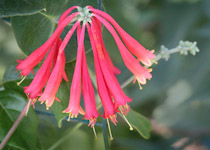 | Trumpet Honeysuckle (Lonicera sempervirens)
Type: vine
Flowers: April-Oct
Light preference: sun, light shade
Moisture: avg
Note: Red tubular flowers are a magnet for hummingbirds. The vine is not invasive |
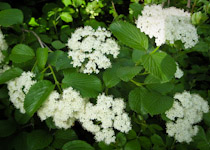 | Arrow-wood Viburnum (Viburnum dentatum)
Type: shrub
Flowers: April-May
Height: 4-15’
Light preference: sun, part shade
Moisture: avg
Note: Host for Tawny Emperor butterfly, birds enjoy berries |
 | Dutchman’s Pipevine (Aristolochia tomentosa)
Type: vine
Flowers: May-June
Light preference: sun, part shade
Moisture: avg
Note: Host for Pipevine Swallowtail butterfly; Aristolochia macrophylla similar species |
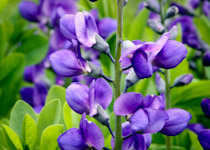 | False Blue Indigo (Baptisia australis)
Type: perennial
Flowers: May-June
Height: 3-5’
Light preference: sun
Moisture: avg
Note: Showy blue flowers; attractive blue-green foliage |
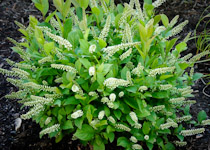 | Virginia Sweetspire (Itea virginica)
Type: shrub
Flowers: May-June
Height: 3-6’
Light preference: sun, part shade
Moisture: avg
Note: Host for Azure butterfly, early nectar source |
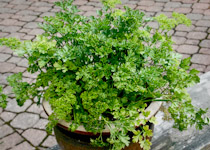 | Golden Alexander (Zizia aurea) as well as non-native Parsley, Dill, Fennel, Carrots
Type: Golden Alexander is a native perennial
Height: 10-12”
Light preference: sun, part shade
Moisture: dry-moist
Note: Host plants for Black Swallowtail butterfly |
Summer |
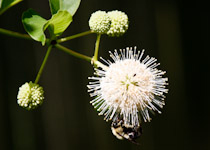 | Button Bush (Cephalanthus occidentalis)
Type: shrub
Flowers: June-July
Height: 5-15’
Light preference: sun
Moisture: moist-avg
Note: Blossoms attract butterflies and other pollinators |
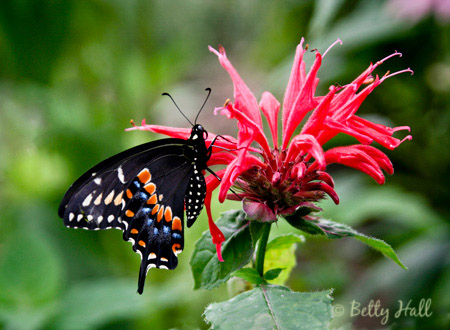 | Scarlet Bee Balm (Monarda didyma)
Type: perennial
Flowers: June
Height: 3-4’
Light preference: sun
Moisture: avg
Note: Red flowers attract hummingbirds and butterflies |
 | Purple Coneflower
Type: perennial
Flowers: June-August
Height: 3-4’
Light preference: sun, part shade
Moisture: avg
Note: Host for Silvery Checkerspot butterfly |
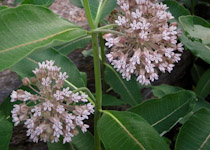 | Common Milkweed (Asclepias syriaca)
Type: perennial
Flowers: June
Height: 3-5’
Light preference: sun, part shade
Moisture: avg-moist
Note: Host for Monarch butterfly; excellent nectar source |
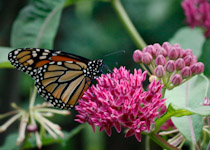 | Purple Milkweed (Asclepias purpurea)
Type: perennial
Flowers: June-July
Height: 2-3’
Light preference: sun
Moisture: avg-moist
Note: Host for Monarch butterfly |
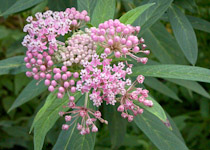 | Swamp Milkweed (Asclepias incarnata)
Type: perennial
Flowers: July-August
Height: 4-5’
Light preference: sun
Moisture: avg-moist
Note: Host for Monarch butterfly |
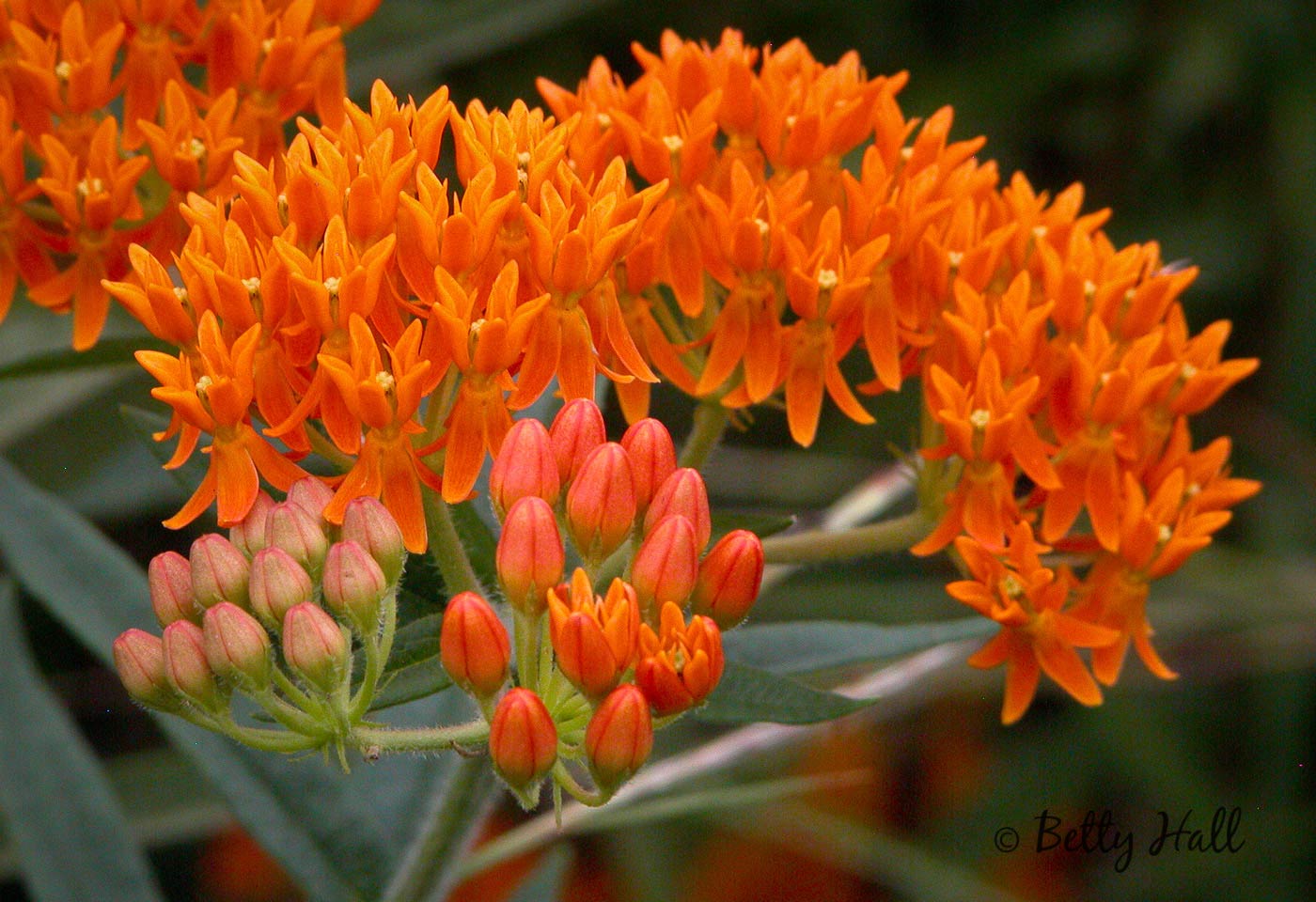 | Butterfly Milkweed (Asclepias tuberosa)
Type: perennial
Flowers: June-July
Height: 2-3’
Light preference: sun
Moisture: avg
Note: Host for Monarch butterfly |
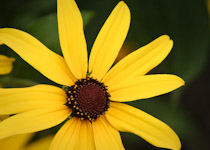 | Sweet Coneflower (Rudbeckia subtomentosa)
Type: Perennial
Flowers: July-Sept
Height: 3-4’
Light preference: sun, part shade
Moisture: avg
Note: Also called Sweet Susan; similar to Orange Coneflower – Rudbeckia fulgida
|
 | Blazing Stars (Liatris species)
Type: perennial
Flowers: June-Sept
Height: 3-6’
Light preference: sun
Moisture: avg
Note: Provides vertical interest; different species bloom at different times |
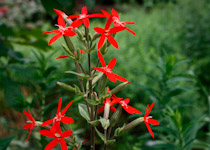 | Royal Catchfly (Silene regia)
Type: perennial
Flowers: July-August
Height: 3-4’
Light preference: sun
Moisture: avg
Note: Red flowers on tall stems attract hummingbirds |
Fall |
 | Mist Flower (Eupatorium coelestinum)
Type: perennial
Flowers: Aug-Oct
Height: 2-3’
Light preference: sun, part shade
Moisture: avg-moist
Note: Excellent source of nectar late summer and fall |
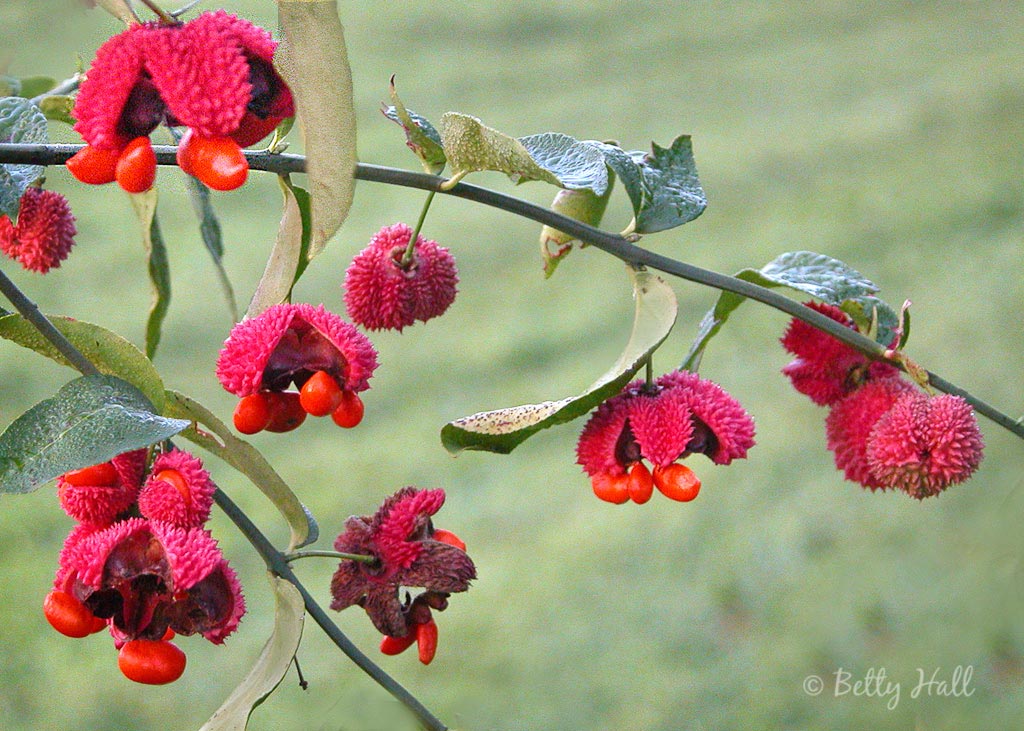 | Hearts-a-Burstin’ (Euonymus americanus)
Type: shrub
Flowers: May-June
Height:
Light preference: sun, part shade
Moisture: avg-moist
Note: Also known as Strawberry Bush; has showy fall fruits |
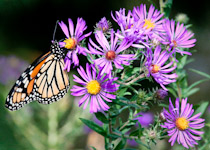 | New England Aster (Aster novae-angliae)
Type: perennial
Flowers: Sept-Oct
Height: 4-5’
Light preference: sun
Moisture: avg
Note: All asters are hosts for Pearl Crescent butterfly |
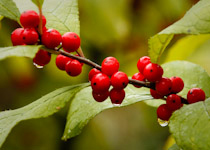 | Winterberry (Ilex verticillata)
Type: shrub
Flowers: berries/Oct
Height: 10-18’
Light preference: sun, part shade
Moisture: avg
Note: Need both male and female plants to get red berries which attracts birds |
Resources:
Sources for Plants
Books
- Bringing Nature Home – Douglas Tallamy has become a national spokesperson for the value of landscaping with native plants.
- The Life Cycles of Butterflies – by Judy Burris and Wayne Richards. This book is especially helpful for those wanting to learn more about common Kentucky butterflies, host plants, and nectar plants.
- Gardening for Birds – by Thomas Barnes. An excellent source of information about gardening for butterflies as well as birds.
Websites
- Wild Ones – http://lexington.wildones.org/. This is the Lexington chapter of the national organization that encourages landscaping with native plants. Monthly meetings provide information and are open to the public.
- North America Butterfly Association – http://www.naba.org/. An excellent source of information about butterflies.
- Betty Hall Photography – https://www.bettyhallphotography.com/blog. My weekly blogs focus on my experiences with native plants in our backyard.
























